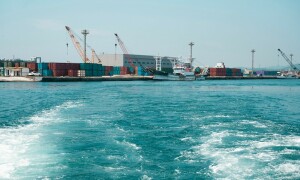Pakistan is about to start its mango export season, and chances are that this year will bring mixed blessings for the sector. The official mango export season traditionally starts during the third week of May and according to experts, Punjab is expecting above average produce of mango, while the produce in Sindh has suffered quite a lot due to climatic changes and infestations.
Talking to BR Research, Abdul Ghaffar Garewal of Mango Research Station stated that both the Chaunsa and Sindhri varieties in Punjab will see higher production thanks to sustainable climatic conditions, lower fog levels, and lesser rains. He pointed out that mango growers in Punjab now have a better understanding of managing their orchids throughout the year, adding that Punjab crop suffered heavily in 2015 due to anthracnose disease attack during the flowering stage. However, he said that the trees are full of healthy flowers this time around, and chances are that Punjab will have a good amount of fruit.
On the other hand, both the experts and growers in Sindh believe that the rains in March and the late snowfall in Northern areas have destroyed scores of flowers and trees. In Sindh, mango trees blossom during February and March, but the fluctuating temperature has played havoc with the plantation.
Pakistan produces close to 2 million tons of mangoes annually and is among the leading mango producing country in the world. Punjab carries the significant share of Mango production with 67 percent, whereas Sindh produces 24 percent and KPK produces 1 percent of the fruit. Despite the fact that Pakistani Mango is recognised as one of the best in the world market, the country has never been able to achieve mango exporting target; it only exports around 0.1 million tons annually.
The primary factors behind the lack of mango exports are the inability to meet the global standards of quality, grading, hygiene and packaging. An issue that comes up every year is the chronic shortage of hot water treatment plants. Hot water treatment helps to eliminate the problem of fruit flies. Besides hot water treatment, mangoes also need hot air, sponge drying, and open air drying.
According to global standards, the fruit needs to be properly graded as per its size and properly packaged in card boxes. Last year Pakistan banned wooden crates, but much more has to be done. According to all Pakistan Fruit & Vegetable Exporters, Importers & Merchants Association (PFVA), it is Punjab and Sindh governments’ responsibility to deal with this issue, but they have failed so take any action. PFVA says that Punjab government has taken some steps recently, but Sindh still lags behind.
In the newly released trade policy, the government has specifically focused on mango exports and put it under a short-term strategy. It is difficult for Pakistan to eliminate the effects of climate change but research can help in addressing this global phenomenon. On the other hand, the government along with fruits growers and exporters can easily handle the other problems faced by this highly lucrative export sector.
BR100
12,702
Increased By
113.8 (0.9%)
BR30
38,258
Increased By
378.2 (1%)
KSE100
118,383
Increased By
1067.8 (0.91%)
KSE30
36,395
Increased By
278.8 (0.77%)






















Comments
Comments are closed.